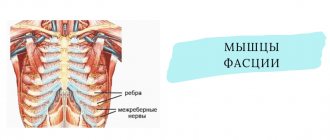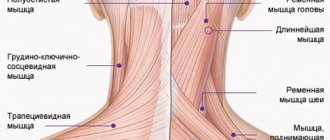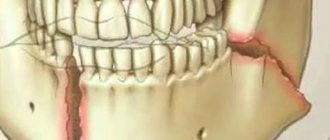Intercostal neuralgia is a condition in which severe pain occurs as a result of compression or irritation of the nerve roots. Therapy of this pathological process requires an integrated approach, which is unthinkable without pharmaceuticals.
What medications should be used for intercostal neuralgia, and what do patients need to know? Before starting treatment for intercostal neuralgia, it is necessary to conduct a high-quality diagnosis of the disease. This will eliminate a number of diseases with similar symptoms.
Thus, the main task of the doctor to whom the patient came with pain in the chest is to determine whether the patient’s condition requires urgent help (as with a heart attack, stroke, hepatic colic and other diseases), or is it a threat to life and health not right now, and the patient has thoracic neuralgia. The same medications for intercostal neuralgia are used here as for localization in other areas.
As for pharmaceuticals, there are several groups of drugs that are used to treat this condition:
- non-steroidal anti-inflammatory drugs (NSAIDs);
- antiviral agents;
- analgesics;
- antispasmodics;
- muscle relaxants;
- B vitamins;
- sedatives.
NSAIDs (non-steroidal anti-inflammatory drugs)
Drug treatment of intercostal neuralgia is impossible without the use of NSAIDs. This is a huge class of drugs that is used for various diseases. These drugs reduce the localization of inflammatory mediators - prostaglandins, due to which swelling is quickly relieved and local compression is reduced.
No ads 1
They also have a noticeable analgesic effect. Among the most popular drugs in this group are Ibuprofen, Piroxicam, Ketorol. These pharmaceutical drugs should not be taken for longer than a certain period of time. The maximum duration of treatment per course is 7 days.
By the way, different drugs in this group have different effects on the body of a particular person. For some, regular Ibuprofen will be preferable, while for other patients its effect will be too weak, and only Nimesulide, which is stronger in its effect, will help them.
Treatment of intercostal neuralgia
Treatment of intercostal neuralgia usually consists of two stages. First, it is necessary to relieve the pain that accompanies intercostal neuralgia, then it is necessary to treat the disease that caused the nerve injury.
In the first week of the disease, it is better to observe bed rest for 1-3 days, preferably lying on a hard surface; it is best to place a shield under the mattress. To relieve pain, painkillers are prescribed, usually from the NSAID group, which not only relieve pain, but also have an anti-inflammatory effect. In addition, muscle relaxants are prescribed to relieve muscle spasms and sedatives. B vitamins (B1, B6, B12) are recommended - they help restore damaged nerve structures. During attacks, light, dry heat helps.
After the acute symptoms have been relieved, it is necessary to carry out a diagnosis and determine the cause that caused the attack of intercostal neuralgia. If this is any general disease (infectious, cold, allergic, diabetes, nervous system disease, depression), it is necessary to treat it.
If intercostal neuralgia is caused by a disease of the spine, that is, it is of a vertebrogenic nature, comprehensive treatment of the spine is recommended. To restore the correct physiological position of the thoracic and cervical spine in cases of intercostal neuralgia, courses of therapeutic massage, manual therapy, and physical therapy are conducted.
Physiotherapy, acupuncture, and laser therapy provide good results for vertebrogenic intercostal neuralgia. To prevent the disease from becoming chronic with frequent attacks, you need to reduce physical activity, not abuse alcohol, and avoid stressful situations if possible.
In the first week of the disease, it is better to observe bed rest for 1-3 days, preferably lying on a hard surface; it is best to place a shield under the mattress. During attacks, light, dry heat helps.
To relieve pain, take painkillers and sedatives. Physiotherapy, acupuncture, and laser therapy provide good results for intercostal neuralgia. It is advisable to take B vitamins (B1, B6, B12). To prevent the disease from becoming chronic with frequent attacks, you need to reduce physical activity, not abuse alcohol, and avoid stressful situations if possible.
To restore the correct physiological position of the thoracic and cervical spine in cases of intercostal neuralgia, courses of therapeutic massage, manual therapy, and physical therapy are conducted.
If conservative treatment does not help, then surgical treatment is performed (for example, osteochondrosis or disc herniation, which cause attacks of intercostal neuralgia).
Antiviral agents
They are similar to NSAIDs, but act against other pathogens: not bacteria, but exclusively viruses. In practice, they are used extremely rarely in the treatment of joint and neurological diseases. A viral infection of the onset of inflammation can be suspected if intercostal neuralgia occurs in a herpetic nature. Among the external manifestations is herpes zoster.
The most well-known remedy that will help the patient cope with the herpes virus is Acyclovir. Its analogues: Zovirax, Cyclovir, Vivorax. People with weakened immune systems most often suffer from local exacerbations of herpes infection, and therefore it makes sense to check the body for a number of other chronic diseases that lead to a similar weakened state.
No ads 2
Analgesics
A number of patients do without medications in this group, but if the patient experiences severe pain attacks, then it is necessary to relieve them with painkillers. The most popular analgesics based on analgin are Baralgin, Sedalgin, Spazmalgon. As soon as severe pain subsides, you should stop taking them.
These tablets also have a number of disadvantages and side effects, in particular on the digestive tract. If the patient additionally uses ointments and creams with an anesthetic component, then it is necessary to take into account the total amount of the product that the patient receives.
Muscle relaxants
These drugs can reduce the rate of formation of certain amino acids, which helps relieve muscle tone and relax skeletal muscles. The active components of these drugs act exclusively on muscle fibers, but when muscle tone is relieved, they significantly alleviate the patient’s condition.
Muscle relaxants cannot be taken without a doctor’s prescription; they are selected for each patient individually, depending on the complexity of the case and the severity of intercostal neuralgia. The most popular pharmaceuticals in this group are Mydocalm, Sirdalud, Baclofen.
[node:field_similarlink]
Symptoms of intercostal neuralgia
By its nature, intercostal neuralgia is:
- irritation, pinching or inflammation of nerve endings in the intercostal space;
- or entrapment of the roots of the thoracic spinal nerves near the spinal column.
Basically, the pain with intercostal neuralgia is localized in the intercostal space, but pain can radiate along the pinched nerve - in the lower back, in the back, under the scapula. Spastic muscle contractions, redness or paleness of the skin, and loss of skin sensitivity in the area of the affected nerve may occur. The pain with intercostal neuralgia is very strong, burning, constant, without attacks
B vitamins
Few people take vitamins seriously as a therapeutic component of a therapeutic regimen for a neurological disease, and this is completely in vain. B vitamins not only participate in cellular metabolism, they are also responsible for many processes in the body. It is the lack of B vitamins that usually leads to muscle weakness, cramps in different parts of the body and other unpleasant symptoms.
In addition to B vitamins, it will be useful to add foods rich in B vitamins to your diet - wholemeal porridge, nuts, pork and beef liver.
Sedatives
Unfortunately, few specialists prescribe sedatives to their patients, although patients really need the latter. Most patients with intercostal neuralgia complain of constant bad mood, depression and dark thoughts. All this is a sure sign that the patient requires comprehensive assistance. By the way, sedatives work not only towards the psychological state of the patient.
Thanks to sedatives, a person will begin to feel calmer about the events occurring in his life around him and not react so violently even to unpleasant situations. Additionally, sedatives will help minimize persistent spasms.
They also help relax skeletal muscles, relieve nervous tension and even high blood pressure, which is usually on the list of the patient's general clinical picture. In other words, this is exactly what will help the patient relax, literally and figuratively. Without sedative medications, therapy may not be effective.
By the way, the most popular remedies with a sedative effect (based on plants - chamomile, motherwort and valerian) are not as effective as pharmaceuticals, but their undoubted benefits cannot be ruled out either. Plant-based products promote good sleep, and this is an important factor in health. Among the most popular drugs in this group is Novopassit.
No ads 3
Intercostal neuralgia - clarifying the diagnosis
Intercostal neuralgia is sometimes confused with heart pain. Although it is not so difficult to distinguish them.
With intercostal neuralgia, the pain intensifies with deep inhalation or exhalation, or any other movement of the body, including coughing or sneezing, or during physical activity. Sometimes it’s painful and you can’t even take a deep breath - attacks of burning pain appear along the intercostal spaces (pain can only be felt on one side of the chest).
Heart pain with angina pectoris does not change with deep inhalation or exhalation, from a change in position or movement in the chest; usually relieved with nitroglycerin; may be accompanied by irregular pulse rhythm, a drop or increase in blood pressure.
With intercostal neuralgia, the pain may intensify with palpation - you can feel the direction of the pain along the nerve. Aching or paroxysmal pain, spreading along the trunk of the nerve or its branches, may be accompanied by other unpleasant sensations - burning, tingling, numbness. By the way, this is why intercostal neuralgia can cause pain not only in the heart area, but also under the shoulder blade, in the back, and lower back (they can sometimes be confused with kidney pain).
It is important to differentiate an attack of intercostal neuralgia and myocardial infarction, which can also cause severe pain that is not relieved by nitroglycerin. Therefore, if there is a sudden attack of pain in the heart area, you must definitely call an ambulance and have an electrocardiogram done, since a heart attack requires urgent medical attention.
Injections, tablets or ointments?
Many patients are concerned about the question: is it possible to replace injections with tablets? The tablet form is considered the most convenient for the patient, and it is the one most often chosen by the patients themselves. But sometimes tablets for intercostal neuralgia have an effect that is insufficient to improve the patient’s condition and relieve pain.
In this case, only injections are used. In addition, tablets often have an adverse effect on the digestive tract. Those patients whose digestive organs are not in the best condition are at risk of side effects.
How to cure intercostal neuralgia at home?
The active component from the ointment enters the bloodstream in a very small amount, and therefore this type of application is considered the best for some patients (young people, pregnant women, elderly people with a bunch of chronic diseases of the digestive tract).
Injections have only one not so pleasant side of the coin - this is the need for outside help. Moreover, injections must be given not only in the gluteal muscle, but also in some cases in the immediate vicinity of the damaged nerve.
Only a professional can give such an injection. A stranger can only do harm. As for ointments, they are actively used in the treatment of intercostal neuralgia and help to relieve pain in a targeted manner. Their use does not require special skills or additional assistance.
The inconvenience, perhaps, is that such products are extremely difficult to use in the workplace (unlike taking pills), and therefore they are usually used at home, in the evening before bed. By the way, some ointments can be called irreplaceable, because they cannot be replaced with tablets or injections. This can be said, for example, about ointments containing bee or snake venom (Apisatron, Viprosal).
Ointments with components such as bee or snake venom have an irritating effect, and therefore blood circulation at the site of their application significantly increases and inflammation processes are reduced
When using ointments, creams and gels with an anti-inflammatory component, it is necessary to take into account the total amount of this substance entering the body with other medications (tablets). Usually, doctors in such cases reduce the dosage of the tablet drug due to the fact that the patient periodically rubs a cream containing this substance into the diseased area.
Causes
— Neuralgia of the occipital nerve can be detected after damage to the cervical vertebra, hypothermia in the occipital region, with osteochondrosis, gout, and also a malignant tumor. This disease is accompanied by unexpected colic in the back of the head.
— Trigeminal neuralgia occurs from chronic sinusitis, multiple sclerosis, aneurysm, caries. The main symptom of this ailment is twitching of part of the face, which may periodically disappear and appear.
— Intercostal neuralgia leads to chest pain and is a consequence of injuries, physical exertion, and curvature of the spine.
— Neuralgia of the sciatic nerve is caused by the influence of various factors on it, for example, sudden lifting of a weighty object, pregnancy, sciatica.
Elimination of intense pain
When pain symptoms are very active and acute, it is necessary to respond quickly. In this case, you can use the following medications:
- Nise. This drug effectively relieves pain of various origins, but it is used only in cases where traditional, weaker drugs do not work.
- Diclofenac injections. The introduction of an NSAID solution will help quickly, literally within the first minutes, stop the inflammatory process and relieve swelling.
- Blockade. This is the name for injections with an anesthetic effect - Lidocaine, Novocaine, Ultracaine, Xiocaine. The solution is injected in close proximity to the source of pain. But it is important to remember that these drugs are toxic and, if used frequently, can have a very negative effect on the functioning of the liver.
You should not self-medicate. It is necessary to seek help from specialists who will prescribe a comprehensive examination and, after determining the cause, select the necessary medications for therapy.








